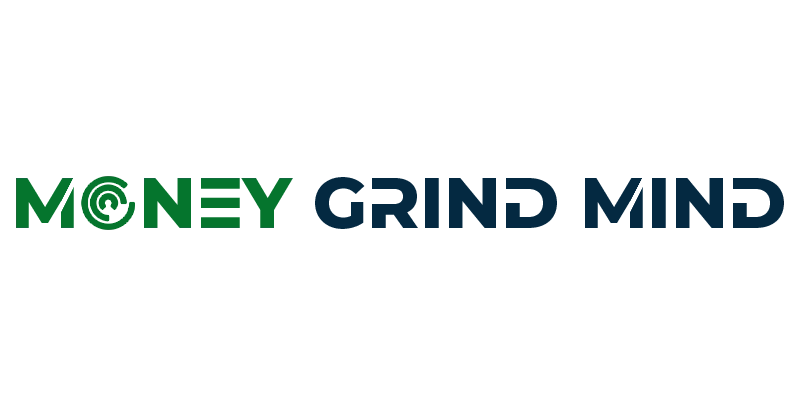Have you ever dreamed of launching your own clothing line and joining the ranks of billionaire fashion moguls?
Do you like what they have done with the Billionaire Studios brand and want something similar but don’t know where to begin? I got you covered.
The fashion industry, with its ever-evolving trends and limitless creative potential, is an alluring landscape for aspiring entrepreneurs. In this comprehensive guide, we’ll unravel the intricate threads of the fashion industry and guide you through the steps to start a successful clothing business.
Whether you’re a student aspiring to enter the world of fashion or an educator looking for valuable insights to share with your students, this article will provide you with the knowledge you need.
- Understanding the Fashion Industry
- Building a Strong Foundation
- Contingency Fund
- Product Development and Supply Chain
- Marketing and Branding
- Sales and Distribution
- Scaling and Sustainability
- How long does it take to start a clothing business?
- Conclusion
Understanding the Fashion Industry
The fashion industry is a dynamic and lucrative arena, and understanding its nuances is key to your success. Let’s delve into its intricacies:
Fashion Industry Scope and Significance
The fashion industry encompasses clothing, accessories, footwear, and more, making it a multi-billion-dollar industry globally. The clothing sector alone is a massive contributor, continually evolving to meet consumer demands.
Market Trends and Consumer Behavior
Understanding market trends and consumer behavior is crucial. Fashion trends change rapidly, influenced by cultural, economic, and social factors.
For instance, the pandemic accelerated the shift towards comfort and athleisure wear, impacting consumer preferences. Staying updated with these trends can inform your design and marketing strategies.
Role of Innovation and Creativity
Innovation and creativity are the lifeblood of the fashion industry.
The ability to create unique and innovative designs sets successful clothing lines apart, which can be seen with the Billionaire Studios brand.
Consider the rise of sustainable fashion, where brands are innovatively using recycled materials and eco-friendly production processes. Innovations like these not only cater to conscious consumers but also reduce environmental impact, aligning with the growing trend of sustainability in fashion.
Building a Strong Foundation
Market Research and Niche Selection
The Importance of Market Research
Before you start, thorough market research is essential. Understand your target audience, their preferences, and what’s missing in the market.
This involves analyzing customer demographics, studying competitor strategies, and identifying gaps in the fashion market (just like Billionaire Studios).
Crafting a Comprehensive Business Plan
| Section | Description |
|---|---|
| Executive Summary | A concise overview of your business. |
| Market Analysis | In-depth analysis of the fashion market. |
| Business Structure | Choosing between an LLC, sole proprietorship, etc. |
| Financial Projections | Revenue, expenses, and funding requirements. |
A well-crafted business plan is your roadmap to success. It outlines your business structure, financial projections, and strategies for growth.
When it comes to financial projections, consider factors like production costs, pricing strategies, and revenue streams.
For funding, explore options such as loans, investors, asking a family member or friends, or crowdfunding, ensuring you have a clear plan for how you’ll finance your venture. Everyone started somehow, even Billionaire Studios.
Legal and Financial Aspects
Business Structure and Legal Requirements
Selecting the right business structure, such as an LLC, is critical. Understand the legal requirements, permits, and intellectual property rights.
You’ll need to register your business, choose a business name, and appoint a registered agent. Additionally, trademark your brand to protect your intellectual property (like Billionaire Studios), including logos and unique designs.
Accounting and Financial Management
Hiring an accountant, setting up accounting systems, and managing budgets are essential. Accounting principles are crucial for financial transparency and investor trust.
Utilize accounting software to track income and expenses, manage inventory, and prepare financial statements.
Accurate financial records not only keep your business in compliance but also provide insights for making informed decisions.
How much does it cost to start a clothing business?
Starting a clothing business can be an exciting venture, but it’s essential to understand the financial requirements involved.
The initial costs can vary widely based on various factors, including the scale of your operation, the type of clothing you plan to sell, and your chosen business model.
In this section, I’ll break down the typical expenses you can expect when launching your clothing brand (similar to Billionaire Studios)
Startup Costs
1. Inventory and Production
One of the most significant expenses for a clothing business is sourcing or producing your garments. The cost can vary depending on whether you’re creating your designs or purchasing inventory from wholesalers.
If you opt for designing your own clothing line (like how they did with Billionaire Studios), you’ll need to budget for materials, manufacturing, and labor costs. On the other hand, purchasing inventory upfront may require a substantial initial investment.

2. Business Registration and Legal Fees
To establish your clothing business, you’ll need to register it legally.
Costs associated with business registration and obtaining necessary licenses and permits can vary depending on your location and business structure.
For instance, registering as a sole proprietorship may be less expensive than forming an LLC or corporation.
3. Branding and Marketing
Building a brand identity is crucial for success in the clothing industry. Costs related to branding include designing a logo, creating marketing materials, and developing a brand strategy (you can take inspiration from Billionaire Studios).
Additionally, setting up and executing marketing campaigns, especially in the competitive fashion market, may require a significant portion of your budget.
4. Retail Space or E-commerce Platform
The choice between a physical store and an e-commerce platform significantly impacts startup costs.
Renting or leasing a retail space comes with monthly expenses, whereas launching an online store involves costs like website development, hosting, and e-commerce software subscriptions. Consider your target audience and market when deciding on your sales channel.
Ongoing Operational Costs
1. Inventory Management
Managing inventory efficiently is an ongoing expense. You’ll need to allocate funds for replenishing stock, tracking inventory levels, and using inventory management software to optimize stock control. Proper inventory management ensures you don’t tie up too much capital in unsold products.
2. Employee Salaries
As your business grows, you may need to hire employees, such as sales staff, designers, or production workers. Employee salaries and benefits are recurring operational expenses that can significantly impact your budget.
3. Marketing and Advertising
Continuously promoting your clothing brand is essential for growth. Allocate funds for ongoing marketing and advertising efforts, which may include social media marketing, pay-per-click advertising, and influencer collaborations.
4. Rent and Utilities (If You Have a Physical Store)
If you operate a brick-and-mortar store, rent, utilities, and maintenance costs are ongoing expenses. It’s crucial to budget for these expenses to ensure the sustainability of your physical retail space.
Contingency Fund
In addition to your planned expenses, it’s wise to set aside a contingency fund. Unforeseen costs can arise in the fashion industry, such as unexpected production delays, quality control issues, or economic downturns.
Having a financial cushion can help you navigate such challenges without compromising your business’s viability.
Product Development and Supply Chain
Designing the Clothing Line
Conceptualizing the Clothing Line
Your clothing line’s concept defines its identity. Collaborate with designers or develop in-house design capabilities to bring your vision to life. Consider the story behind your brand—what makes it unique and compelling? This narrative will resonate with consumers, forging a deeper connection with your brand.
Supply Chain Management
Building efficient relationships with suppliers and manufacturers is key. Ethical considerations and sustainable sourcing are increasingly important.
Evaluate suppliers not only for cost-effectiveness but also for their commitment to ethical labor practices and sustainable materials. Sustainable supply chains not only reduce environmental impact but also attract socially conscious consumers.
Marketing and Branding
Building a Brand Identity
The Role of Branding
Creating a unique brand identity and story is vital. Customers connect with brands that resonate with their values. Your brand’s identity goes beyond the logo—it encompasses your mission, values, and the emotions you want to evoke.
Conduct market research to understand your target audience and their preferences, tailoring your brand identity to align with their desires.
Effective Marketing Strategies
Utilize social media marketing, influencer collaborations, and data-driven strategies to reach your target audience effectively. Accounting metrics can help measure marketing ROI. Invest in social media marketing, where platforms like Instagram and TikTok are hubs for fashion enthusiasts.
Engage with your audience by personalizing their shopping experiences, offering exclusive promotions, and responding promptly to inquiries. Tracking your marketing efforts through accounting metrics allows you to refine your strategies and allocate resources wisely.
Sales and Distribution
Sales Channels
Online vs. Offline Sales
Choose the right sales channels, be it an online store, retail location, or pop-up store. Online stores are increasingly popular due to their global reach. Establishing an online presence through e-commerce platforms like Shopify or WooCommerce can expand your customer base exponentially.
However, don’t overlook the potential of offline sales, especially if you have the opportunity to showcase your clothing in physical stores or pop-up shops.
Inventory Management and Sales Analytics
Efficient Inventory Management
| Inventory Management Software | Description |
|---|---|
| PMMilestone 2.0 Pro | PM is a great package for starters that includes all the basic and pro business tools and templates that you need, ALL in one package. Click here to find out more. |
| Zoho Inventory | Zoho Inventory provides an all-in-one solution for inventory control, order management, and warehouse optimization. It integrates seamlessly with other Zoho business software. |
| QuickBooks Commerce | QuickBooks Commerce (formerly known as TradeGecko) is a cloud-based inventory management system that simplifies order management, demand forecasting, and multi-channel selling for e-commerce businesses. |
Efficiently managing inventory prevents overstocking or understocking issues. Invest in inventory management software to streamline operations. Regularly update inventory records, track product turnover rates, and implement just-in-time inventory practices to reduce carrying costs.
Role of Data Analytics
Leverage data analytics to optimize sales, inventory, and production processes. Successful clothing brands use data to make informed decisions.
Analyze sales data to identify top-performing products, customer preferences, and peak sales periods. Use these insights to refine your product offerings and marketing strategies, ensuring you meet customer demands effectively.
Scaling and Sustainability
As your clothing business grows, scaling sustainably becomes paramount.
Sustainable practices are not just ethical; they’re good for business. Implement eco-friendly production processes and materials.
Consider using recycled fabrics or exploring innovative sustainable materials like mushroom leather. Additionally, reduce waste by optimizing production processes and adopting circular fashion practices, such as recycling and upcycling.
How long does it take to start a clothing business?
Starting a clothing business is not just about the financial investment; it also requires a significant amount of time and planning. The timeline for launching your clothing brand can vary depending on several factors, including your preparedness, the complexity of your designs, and the market you’re entering. In this section, we’ll break down the key phases and the time it typically takes to start a clothing business.
Phase 1: Planning and Research
The first phase in starting a clothing business is planning and research. During this stage, you’ll define your business concept, target audience, and niche within the fashion industry.
You’ll also conduct market research to understand consumer preferences and trends. This phase can take anywhere from several weeks to a few months, depending on the depth of your research and the clarity of your vision.
Phase 2: Design and Prototyping
Once you have a clear concept and target audience, you’ll move on to designing your clothing line. This phase involves creating sketches, selecting fabrics, and developing prototypes.
The duration of this phase depends on the complexity of your designs and your access to resources. Simple designs may progress more quickly, while intricate or custom-made pieces can extend the timeline.
Phase 3: Sourcing and Production
Sourcing materials and setting up production are critical steps in the process. Finding reliable suppliers and manufacturers can take time, especially if you’re looking for ethical and sustainable options. Negotiating contracts and ensuring quality control are essential and can add to the overall timeline.
Phase 4: Legal and Administrative Requirements
Registering your business, obtaining necessary permits, and ensuring compliance with local regulations can be time-consuming. The duration varies by location and business structure. For instance, registering as a sole proprietorship might be faster than establishing an LLC.
Phase 5: Branding and Marketing
Building a brand identity and marketing strategy is an ongoing process, but the initial phase can take several weeks to months.
This phase includes designing your logo, creating marketing materials, and developing a marketing plan. Launching your online presence, including your website and social media accounts, also falls into this phase.
Phase 6: Sales and Distribution
Determining your sales channels, whether online or through physical stores, can impact the timeline. Setting up an e-commerce platform can be quicker than securing and outfitting a retail space. The time it takes to build relationships with distributors or retail partners also factors into this phase.
Phase 7: Launch and Growth
The official launch of your clothing business marks the end of the startup phase, but it’s just the beginning of your journey. Growing your brand, expanding your product line, and reaching a wider audience are ongoing efforts that can span years.
Conclusion
In conclusion, starting a successful clothing business (like Billionaire Studios) is a complex but rewarding journey. The fashion industry offers immense opportunities for those who understand its intricacies and are willing to adapt to evolving trends.
As a student or educator, exploring these topics in-depth can provide valuable insights into this dynamic industry.
You can also just reverse engineer your favourite clothing brand (e.g. Billionaire Studios) and study how they did it. Take inspiration on how they did it. For this article, I chose Billionaire Studios because it’s a small business and easy to understand in contrary to other clothing brands that are larger than Billionaire Studios for example.
Remember, the fashion world is ever-changing. Stay informed, be innovative, and let your creativity flow. Your journey to owning a successful clothing line begins here.



